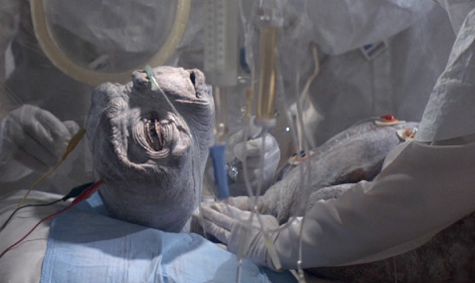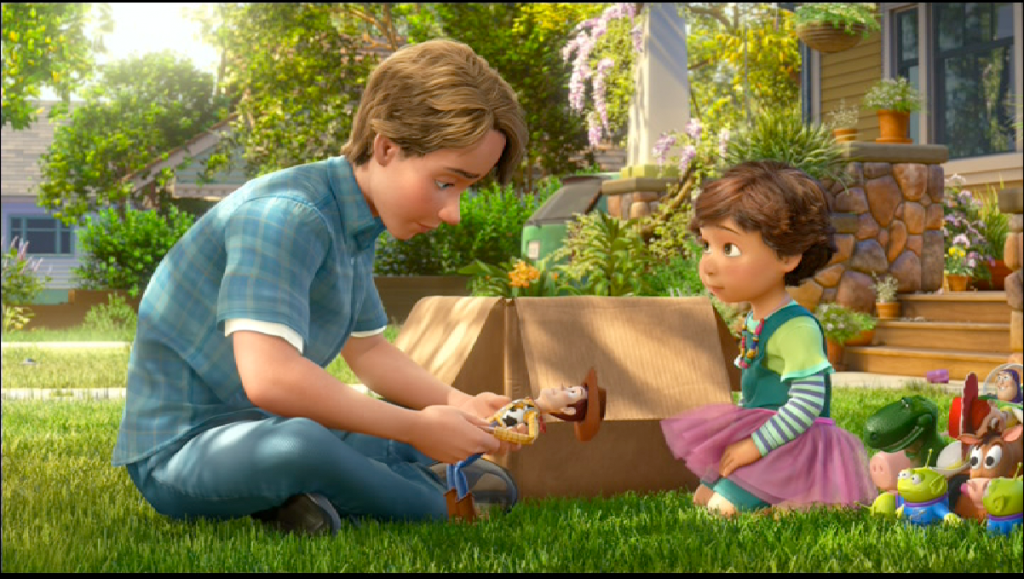No reviews Thursday or Friday (Thanksgiving and Black Friday). So I’m giving you the Thursday article early. There will be a little surprise post tomorrow that you’ll want to check out for sure though. Wish I could tell you more. :)
Say you have a great concept. No, say you have a great concept and a great main character. Say you’re also good with structure and pretty nifty with dialogue as well. You’re rolling into your script like a pitcher on a 15 game win streak. If screenwriting success is a game of odds, you’ve stacked them in your favor.
Why, then, is this scenario not a slam dunk? How come so many writers dribble down the floor, only to get weak knees as they approach the basket? How come those gimme points all of a sudden look like a half-court heave? The answer may surprise you.
I want you to think back to your most memorable movie-going experiences. What is the common denominator? What is it that stays with you from your favorite films? Chances are, it’s emotion. I still remember seeing E.T. as a kid and crying my ass off when he died. At the time, I didn’t know movies were capable of emotional punches like that. Likewise, I’ve never felt so elated as when E.T. came back to life! I was sobbing like the little boy that I was.
The way you can still fail with a great concept and a great character, is if you don’t make your reader FEEL anything. That’s what today’s post is about. If you can make a reader or a moviegoer cry, you’ve given them something they’ll remember for the rest of their lives. It’s the ultimate suspension of disbelief achievement. You’ve done such a great job fooling this person into thinking your story was real, that they actually sobbed about it.
So the question becomes, how do you achieve this? A lot of writers assume that emotional giving is the same as emotional receiving. They think that if you have a character cry, that means the audience will cry too. Think about how many times you’ve watched characters crying in movies. Did you cry too? Usually not.
Getting a reader to cry comes down to one thing: DEATH. Or, more specifically, the “Death-Rebirth” formula. But death doesn’t always have to be literal. As you’ll discover below, any loss can have a death-like effect. However, we’ll start with the literal definition first so you can learn the basics for turning grown men into cry-babies. Then we’ll get to the advanced stuff.
LITERAL DEATH
The most obvious way to get those tear ducts flowing is through a character death. But the journey starts a lot sooner than that, all the way back when we first meet your character. Your first job is to make us like this person. This may seem obvious but in a world where more and more writers are afraid of the word “likability,” it’s important to remember that nobody cries for jerks.
Look no further than E.T. to see this in action. What character in history is more likable than E.T.?? Obviously, the more we like someone, the more we care about them. And once the audience cares about someone, it’s easy to manipulate their emotions. We love E.T. so much by the time he dies, of course we’re sobbing.
To see how the antithesis of this works, look at the recent hit film, Gone Girl. Gillian Flynn has gone on record as saying she hates the word “likable” in relation to characters. And you see that with her characters. Amy is a terrible person and Nick is not a very good one. So guess how you’d feel if either one of these characters died? Would you cry? Would you get emotional like you did in E.T.? No. Because despite the characters being interesting, the fact that you don’t like them prevents you from getting emotional should they perish.
To really ensure that those tears come, though, you need another character who cares deeply for the person who dies. Death alone is not a sad thing. It’s our empathy for the character who’s lost someone that gets us. We saw that with E.T. and Elliot. And we saw it at the end of Titanic, with Jack and Rose.
NON-LITERAL DEATH
Now that you see how that works, let’s look into non-literal deaths. Non-literal deaths include anything that dies. A friendship, a dream, a job, one’s faith. At the end of Casablanca, we have the DEATH of a relationship – Rick and Ilsa, which has led to quite a few tears over time. There’s a trick to this however. Whatever dies has to have meant something to the characters. You can’t kill a trivial job and expect the reader to care. But if you kill a job that we’ve seen a man put his blood, sweat, and tears into for 40 years, like in the film, Mr. Holland’s Opus, then you better believe we’ll get emotional when it’s ripped away.
But I’m not going to talk about death itself because that’s pretty straightforward. The heavyweight emotional moments come from the belief that death is permanent, only for our subject to be reborn again. It’s the non-literal equivalent of E.T. dying before coming back to life. It’s that one-two punch that always gets the reader.
LOVE
Let’s take love as an example. Watching two people fall in love does not make one cry. We need the relationship to suffer before that can happen. We need it to DIE. So just like before, start with a main character we like. Couple that with a romantic interest we like. We should want to see these two end up together. Throughout the movie, throw obstacles at them that prevent them from being together. Maybe they’re involved in a rocky relationship, a la Eternal Sunshine of the Spotless Mind. Maybe they’re in relationships with other people. Maybe they’re stuck in a friendship, a la When Harry Met Sally. At some point, you KILL the relationship. This is the death part. This happens when Harry dumps Sally after sleeping with her. This destroys us because it feels like death to us, like there’s no coming back from it. How elated are you, then, when the writer brings the relationship back from the dead (Harry tells Sally he loves her and she accepts him)? The REBIRTH moment is what really triggers the emotional response here.
CHARACTER FLAWS
It’s the same thing when you’re dealing with character flaws. Again, start with a character we like. Then give them a flaw. Let’s say it’s that they don’t believe in themselves. Make that flaw a HUGE obstacle in their lives – something that holds them back from their hopes and their dreams. Now create a high-stakes scenario that will directly challenge that flaw. The movie scenario I’m thinking of is Rocky. Rocky never believed he was good enough. The high-stakes scenario that will challenge this flaw is the Heavyweight Boxing Title. How do we get the most out of this moment? If you’ve been paying attention, you know we have to KILL any hope of Rocky overcoming his flaw. We see this when Rocky starts severely doubting himself before the fight. There’s no way he can beat this guy. Rocky doesn’t think he’s good enough. Then, in the fight, Rocky goes toe-to-toe with Apollo, believing in himself more with each round. In the end, he goes the distance with a champion, allowing him to overcome his fear. We thought Rocky’s belief was dead, which is why it’s so emotionally cathartic to see that belief REBORN, to have him conquer that fear. That’s why we tear up.
HOPE
You can apply this death-rebirth model to almost anything. In Toy Story 3, we’re incredibly sad when, at the end of the movie, the toys are designated for a life in the attic. Their hope to ever be toys that are played with again is officially DEAD. So what happens? They’re donated to the sweet little next door neighbor. A REBIRTH. We’re crying because, darn it, we were sure those toys were dead in the water. But now they have a whole new life again.
The more you can convince us of the death part – that there is no chance whatsoever that our character is coming back from it – the more powerful the tears will be when the rebirth occurs. I don’t know about you, but I didn’t see any way that our Toy Story 3 toys were going to be played with again. I thought those chances were dead. So that donation to the girl shocked me, creating a hell of an emotional response.
Of course, this isn’t the only way to make a reader enjoy a story. There are all sorts of emotions to draw upon. There are thrills, for example, like riding dragons through the sky in Avatar. There are scares, like in any good horror movie. There are laughs, of course. There’s shock, like when you find out Bruce Willis is a dead person. All of these emotions should make their way into your story. But there’s nothing quite like making the reader cry. I guarantee you, if you make the reader cry, he will recommend your script to other people.
I’d love to hear what storytelling practices you guys use to elicit emotion from your reader. If you don’t know, go find the movies that made you cry growing up and reverse engineer them until you find the cause. Again, nothing stays with a reader more than a good cry. So it’s in your best interest to figure out how to get them there.




